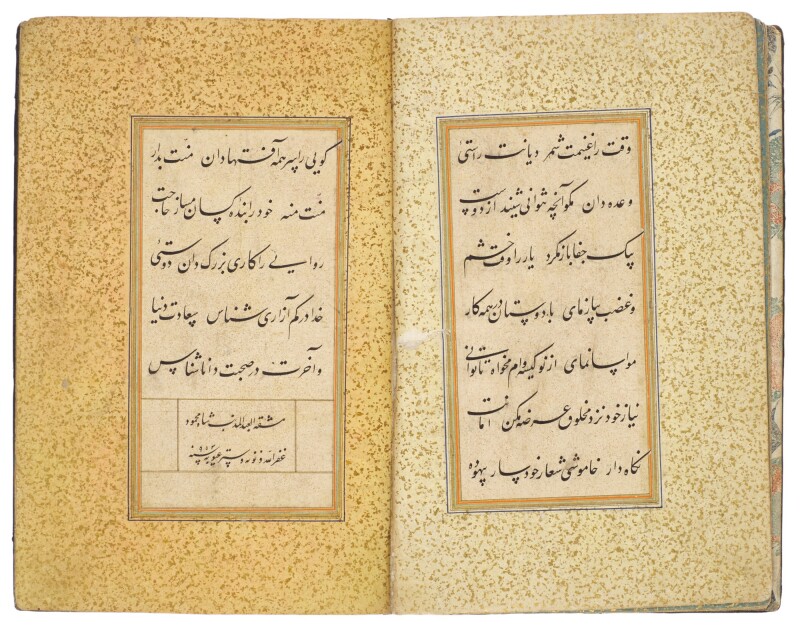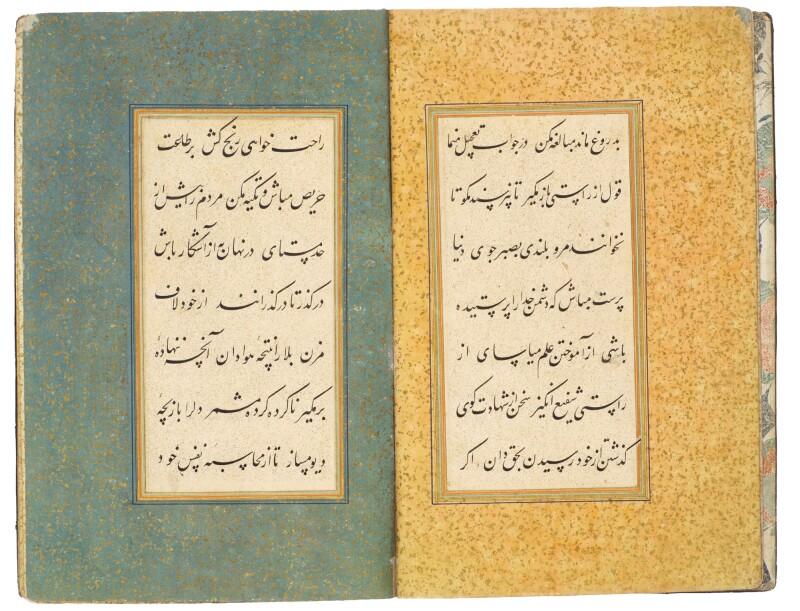- ‘Abdullah Ansari, The Nasa’ih (Councils), copied by Shah Mahmud Nishapuri, Persia, Tabriz, Safavid, dated 953 AH/1546-47 AD 1546 - 1548
- Handicrafts and classics, Calligraphy, manuscript
- 13 * 20.8 cm
- Persian manuscript on gold-sprinkled paper, 6 leaves plus 2 fly-leaves, 7 lines to the page written in black nasta’liq, ruled in green, orange, gold and blue, the margins of different coloured gold-sprinkled paper, f.1b with a polychrome and gold heading, in a brown leather binding with a gilt stamped central medallion and doublures of marbled paper
Estimation
£15,000
19,634 USD
-
£20,000
26,178 USD
Realized Price
£23,940
31,335 USD
36.8%
Artwork Description
Shah Mahmud, known as Zarrin-qalam (Golden Pen), was born in the city of Nishapur, Persia, and studied calligraphy under the supervision of Abdi al-Katib Nishapuri. He specialised in the style of nasta'liq script of the famous master Sultan Ali al-Mashhadi (d.1519). This manuscript was copied when he was still working at the court of Shah Tahmasp.
Shah Mahmud is thought to have been Shah Isma'il's (d.1524) favourite calligrapher, and he was held in such high esteem that during the campaign against the Ottoman Sultan Selim I, he was locked up by the ruler alongside the painter Behzad, for fear of their possible kidnap by the Ottomans (see S. Rado, Turk Hattatlari, Istanbul, 1980, p.67). Under the patronage of Shah Tahmasp (r.1524-76) these two masters later combined to produce one of the most spectacular manuscripts of Nizami's Khamsa, now in the British Library (inv. no.2235). Shah Mahmud later moved to Mashhad and spent the rest of his life copying calligraphic pages and teaching pupils, including Qadi Ahmad, who met him in Mashhad. He died in 1564.
Celebrated as one of the greatest masters of nasta'liq script, Shah Mahmud's works have been collected by royal bibliophiles across the Muslim world. It has been noted that members of the Ottoman elite particularly adored him. A magnificent Qur'an manuscript by him, transcribed in nasta'liq, can be found in the Topkapi Palace. See also M. Serin, Hat Sanatı ve Meshur Hattatlar, Kubbealti, Istanbul, 1999.
Shah Mahmud's recorded work includes manuscripts and calligraphic pages dated between 923 AH (1517-18 AD) and 982 AH (1574-75 AD) (Bayani vol.I, pp.295-304; vol.II, pp.305-7; Minorsky 1959, pp.135-8).
More lots by Unknown Artist
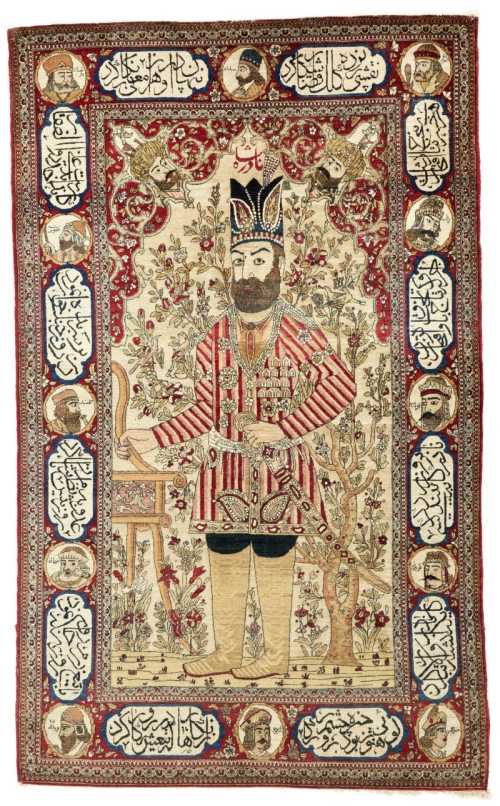
An Isfahan pictorial rug, Central Persia, circa 1910
Estimation
£4,000
5,236 USD
-
£6,000
7,853 USD
Realized Price
£5,670
7,421 USD
13.4%
Sale Date
Sotheby's
-
30 March 2022

A gold medal commemorating the coronation of Muhammad Reza Shah and Queen Farah
Estimation
£100
132 USD
-
£200
263 USD
Realized Price
£160
211 USD
6.667%
Sell at
Sale Date
Rosebery's Auction
-
1 April 2022
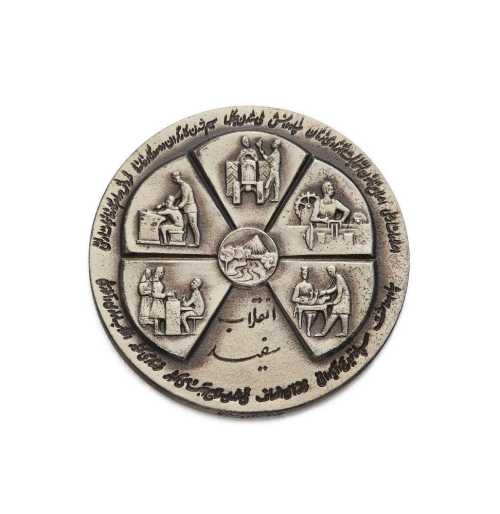
A silver memorial medal of the White Revolution, Muhammad Reza Shah, 1967
Estimation
£200
263 USD
-
£300
395 USD
Realized Price
£170
224 USD
32%
Sell at
Sale Date
Rosebery's Auction
-
1 April 2022
Realized Price
67,245 USD
Min Estimate
35,481 USD
Max Estimate
53,247 USD
Average Artwork Worth
+83.63%
Average Growth of Artwork Worth
Sales Performance Against Estimates
Average & Median Sold Lot Value
2021 - 2025
Performance vs. Estimate
2021 - 2025
Sell-through Rate
2021 - 2025
Similar Artworks
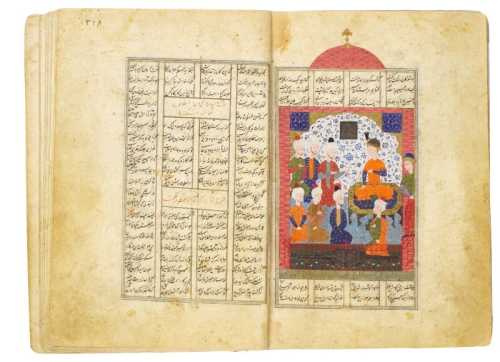
Nizami (d.1209), Khamsa, copied by Khwaja Mir ibn Shams al-Din Muhammad Munshi Astarabadi, Persia, Safavid, dated 966 AH/1558-9 AD
Estimation
£10,000
13,089 USD
-
£15,000
19,634 USD
Realized Price
£22,680
29,686 USD
81.44%
Sale Date
Sotheby's
-
30 March 2022
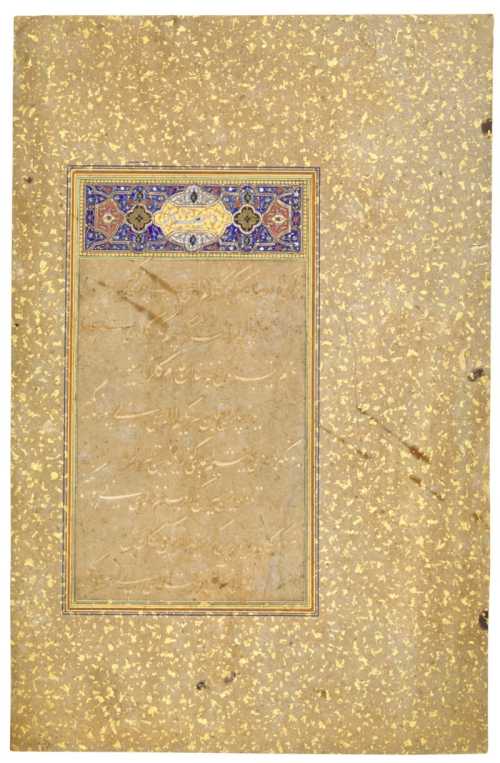
An illuminated page from a divan of Sultan Husayn Mirza Bayqara, with découpage nasta'liq calligraphy, Eastern Persia, Herat, circa 1490
Estimation
£10,000
13,089 USD
-
£15,000
19,634 USD
Realized Price
£18,900
24,738 USD
51.2%
Sale Date
Sotheby's
-
30 March 2022
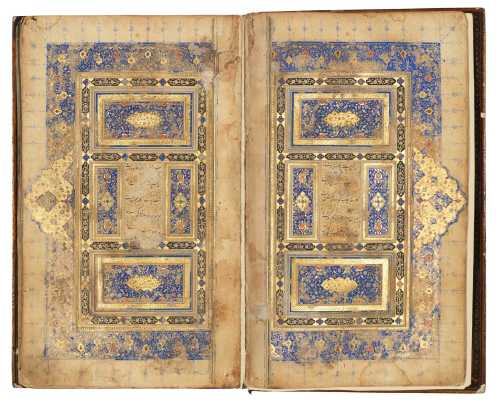
AMIR SHAHI (D.AH 857⁄1453 AD): DIWAN
Estimation
£10,000
13,161 USD
-
£15,000
19,742 USD
Realized Price
£27,720
36,483 USD
121.76%
Sell at
Sale Date
Christie's
-
31 March 2022

